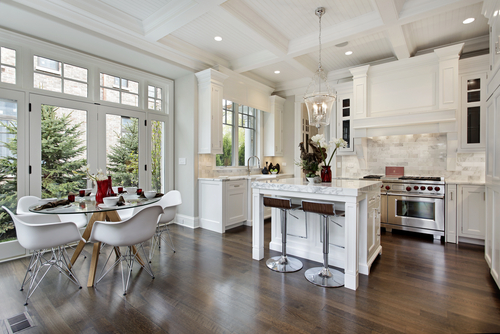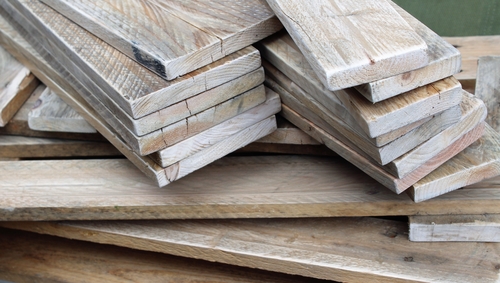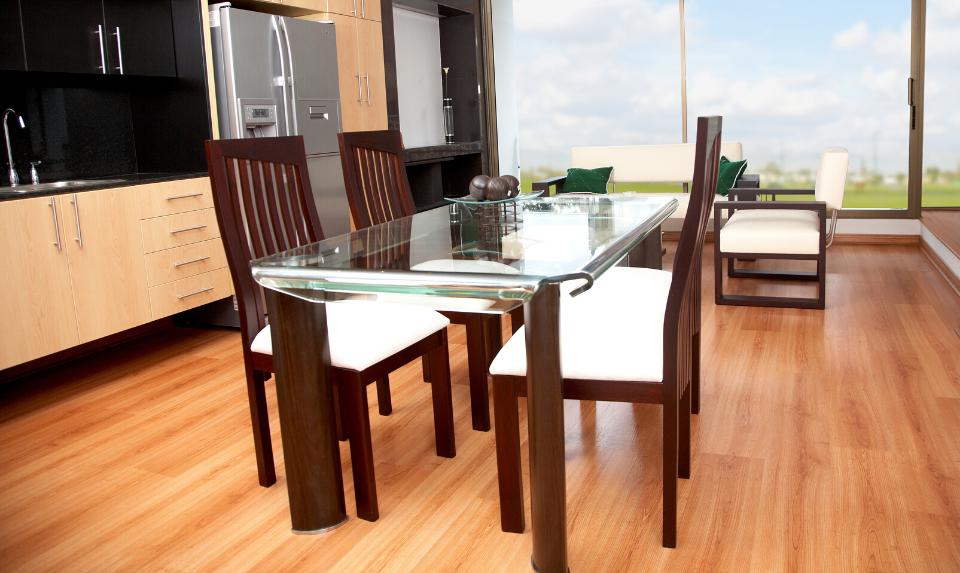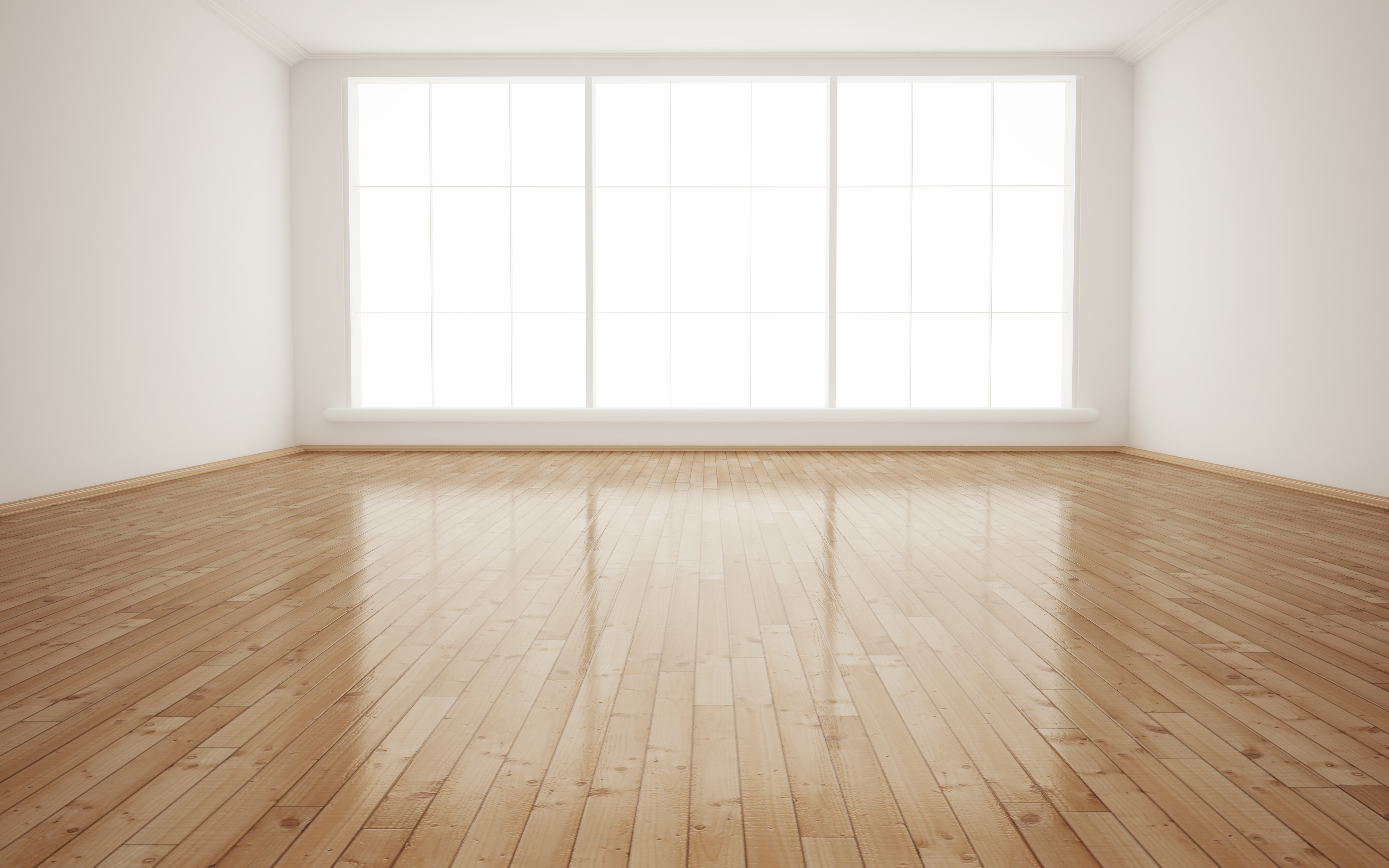Hardwood is considered as one of the sturdiest and most classic flooring materials. On top of those, a hardwood floor installation adds tremendous value to a home. In today’s post, we’ll take a look at the types of hardwood floor installation materials suitable for the kitchen.
Is Hardwood Floor an Ideal Choice for the Kitchen?
It’s a common known fact that when you get a hardwood floor
installation for your property, you have to be ready to care for and maintain
it. Since it’s not a very good choice for areas in the house susceptible to
moisture and wetness, is it ideal for the kitchen area?
Some hardwood floors’ finishes supposedly make them
resistant to water and moisture. However, they are not waterproof, and there
lies the difference.

This type of flooring is discolored by water; the fibers can
also swell. Water can cause the hardwood flooring area to buckle. Flooring
manufacturers may not recommend hardwood floor installation in areas with the
likelihood of wet conditions. Also, moisture can penetrate concrete slabs, so
installing hardwood against concrete may not be advisable.
Types of Hardwood Floor
Depending on what kind of hardwood flooring material you
get, the cost, installation, maintenance, and repair will also vary. A hardwood
floor installation in the kitchen and other parts of the home fall into the
following types:
Solid Unfinished Boards
Solid hardwood planks that are finished in place provides the
best wood floor installation option for a kitchen. With this type of flooring
installation, the planks go tightly together. During the installation, the
planks are also sealed with a sealer coat. The sealer coat will completely
cover the surface.
The sealer coat also gives the protection that won’t be
infiltrated by water or other staining agents. Additionally, solid unfinished
planks have been popular to last for at least 100 years, which is a long time.
This type of flooring installation is an ideal option for
kitchens, though it may be getting rarer and rarer to use.
Solid Prefinished Boards
Many flooring manufacturers provide consumers with
prefinished solid hardwood boards. This type of flooring takes the work out of
regular flooring installation. This type of prefinished flooring has also
surpassed the unfinished variety in terms of popularity.
As the name implies, prefinished planks already come sanded,
stained, sealed, and finished before they are sold. Flooring installers only
need to complete the installation part; they don’t have to sand, stain, seal,
and finish the boards after the installation job.
However, solid prefinished boards are often milled. This
means that the boards may have somewhat beveled rims. This makes the design of
some prefinished planks not ideal in kitchens.
Engineered Wood Planks
Engineered wood planks is a type of flooring material where
the layers are attached together. The sheets are composed of solid hardwood on
top and MDF or plywood at the base. This type of floor is prefinished.
Engineered wood boards are manufactured with a click-lock
feature. This system means the boards are interlocked around the edges. This
feature also makes it easy for flooring installers to attach it as a floating
floor, which means it doesn’t attach to the subfloor.
This type of hardwood floor is preferred by those who may
not want to call professional flooring installers and want to do it themselves.
Additionally, engineered wood floors are durable, thanks to
their stable core made of plywood. Engineered wood is also a good choice,
especially if you need to have existing concrete slabs.

Reclaimed Flooring Planks
Nowadays, more and more consumers are opting for repurposed or reclaimed hardwood for their own flooring installation.
These reclaimed planks include flooring materials taken from demolished office buildings, factories, bowling alleys, and other establishments.
This option is increasingly appealing to property owners
because, aside from saving on installation and materials costs, it’s also an
environment-friendly flooring choice – because of the use of recycled
materials.
Reclaimed flooring, if carefully and properly installed, is
an acceptable flooring option for the kitchen. Make sure you are employing the
services of a flooring company experienced in handling reclaimed wood.


